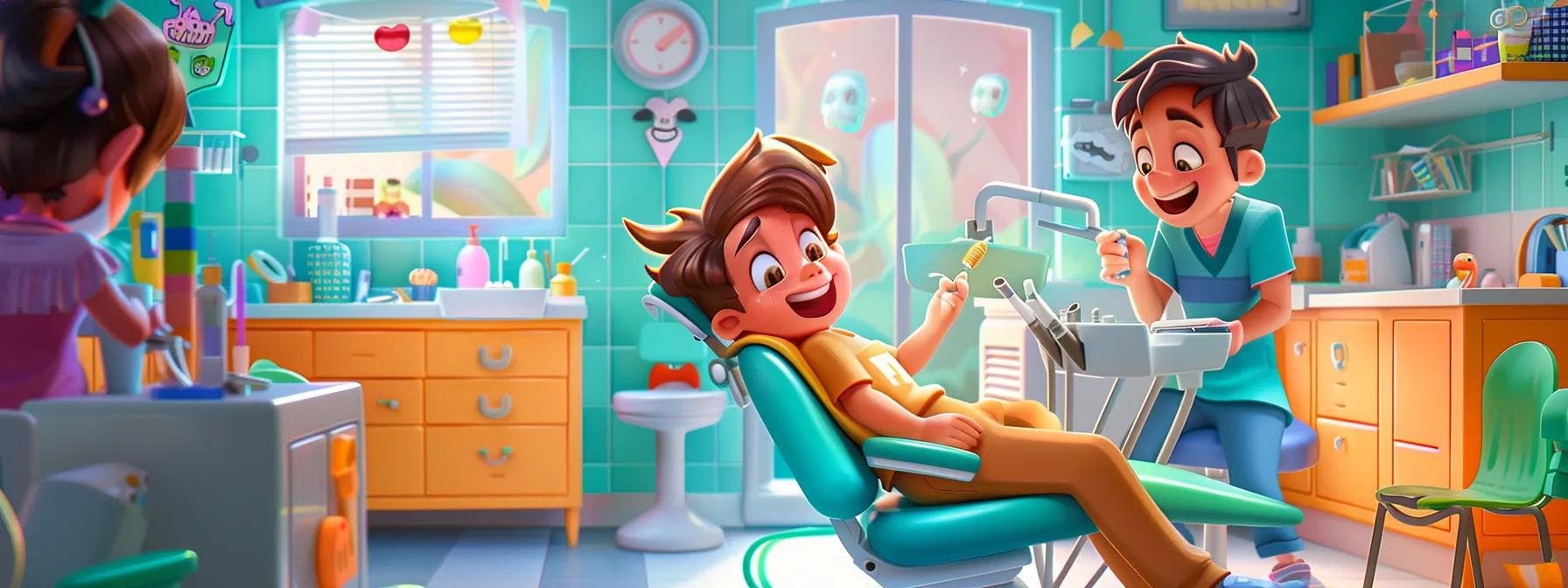Why Pediatric Dental Emergencies Matter
Dental emergencies in children can feel overwhelming, both for the child and their caregivers. Unlike adults, children often have limited ways to express pain, fear, or discomfort—making it harder to assess the severity of a situation without professional evaluation. What may start as a minor fall or a sudden cry of pain can escalate into a serious dental issue if not handled appropriately. Recognizing the signs of an emergency and knowing how to respond quickly can significantly improve the outcome.
The long-term effects of pediatric dental trauma can be far-reaching. A knocked-out permanent tooth, for example, might lead to years of orthodontic treatment. An untreated infection could affect not just the mouth, but the child’s overall health and development. That’s why prompt, age-appropriate dental care is essential. Emotional reassurance, expert intervention, and follow-up care are key to protecting both the physical and psychological well-being of young patients.
Common Dental Emergencies in Children
Children are curious and full of energy. Whether climbing, running, biking, or playing sports, they’re prone to accidents. Unfortunately, many of those accidents can result in dental trauma. Understanding the most common types of emergencies can help parents react appropriately when the unexpected happens.
Each type of dental emergency presents unique challenges. While some situations, like chipped baby teeth, may not always require urgent treatment, others—like avulsed permanent teeth—demand immediate attention. By becoming familiar with these emergencies, parents can act quickly and confidently.
Knocked-Out (Avulsed) Teeth
A knocked-out permanent tooth is one of the most urgent dental emergencies a child can experience. Time is critical—the best chance of saving the tooth occurs within 30 to 60 minutes of the injury. Unfortunately, many parents are unsure of what to do in the moment, and hesitation can cost the child their natural tooth.
If a permanent tooth is avulsed, it should be handled by the crown, rinsed gently with milk or saline, and—if possible—reinserted into the socket. If reinsertion isn’t possible, the tooth should be stored in a container of milk or the child’s saliva to keep it moist until professional care is available. Reimplantation is not recommended for baby teeth, as this can damage the developing permanent tooth underneath.
Chipped, Cracked, or Fractured Teeth
Cracked or chipped teeth are common childhood injuries. From falling off a bike to colliding with a classmate during sports, it doesn’t take much force to damage enamel. The severity of the crack determines the urgency—some chips may be purely cosmetic, while others may expose sensitive dentin or even reach the pulp.
Parents should rinse the child’s mouth with warm water and apply a cold compress to reduce swelling. Any tooth fragments should be saved in milk or saline and brought to the dentist. Early treatment can often restore the tooth with bonding or crowns, and prevent complications like infection or further breakage.
Toothache and Dental Abscess
Toothaches are among the most common complaints in children and can stem from a range of issues, including decay, emerging molars, or trauma. While not every toothache signals a dental emergency, any pain that is persistent, worsening, or accompanied by swelling or fever requires professional evaluation.
A dental abscess—an infection in or around the tooth—can be particularly dangerous. Symptoms include a swollen face or jaw, fever, and a foul taste in the mouth. Parents should never ignore these signs. Prompt dental treatment, often including drainage and antibiotics, is crucial to prevent the infection from spreading.
Soft Tissue Injuries
Cuts and bruises to the lips, cheeks, tongue, or gums are common in active children. These injuries often occur alongside other dental trauma and can bleed heavily, causing panic in parents and distress in children. Fortunately, most soft tissue injuries can be managed with basic first aid.
Use clean gauze to apply gentle pressure for 10–15 minutes, and follow with a cold compress to reduce swelling. If the bleeding doesn’t stop, or if the wound is deep or shows signs of infection, seek dental care. Sutures or antibiotics may be needed in more serious cases.
Loose or Misaligned Teeth After Trauma
After a fall or impact, a child’s tooth may feel loose or appear to be pushed out of alignment. This is especially concerning if it involves a permanent tooth. Misalignment can interfere with bite development and may indicate damage to the supporting bone or ligaments.
Parents should not attempt to reposition the tooth themselves. Instead, have the child bite gently on gauze to stabilize the area, and call your pediatric dentist immediately. Early evaluation can prevent long-term issues like nerve damage, root resorption, or misalignment of the permanent teeth.

Immediate At-Home Actions for Parents
When a dental emergency strikes, knowing what to do in the first few minutes can change the outcome entirely. Providing the right first aid at home can reduce pain, minimize complications, and even save a tooth. But just as important is knowing what not to do, as well-meaning mistakes can cause additional harm.
Here are essential first-aid steps for parents:
- Rinse the child’s mouth with warm salt water to reduce bacteria and soothe irritation.
- Apply a cold compress to the cheek or lip to reduce swelling and pain.
- Use child-safe pain relievers like acetaminophen or ibuprofen—never aspirin.
- If a tooth is knocked out, handle it by the crown and store it properly.
- Save any tooth fragments or objects that could help your dentist diagnose the issue.
Avoid applying ice directly to the gums or placing aspirin on the sore area. Never ignore swelling, fever, or facial changes—these could indicate a serious infection requiring immediate care. Always contact your child’s dentist to determine the next best step.
What to Expect at the Emergency Dental Visit
Emergency dental visits can be stressful, especially for children who are already in pain or frightened. At Grand Prairie Family Dental, we work hard to make every pediatric emergency visit as comfortable, clear, and effective as possible. Knowing what to expect helps reduce anxiety for both the child and their parents.
Upon arrival, your child will receive a thorough evaluation. The dentist will examine the injury, review the child’s health history, and use diagnostic tools like X-rays if needed. Clear communication is key—we explain each step using age-appropriate language and comfort measures. For nervous kids, we offer distraction tools and, if necessary, sedation to ease anxiety.
Treatment options vary depending on the type of emergency:
- Knocked-out teeth may be reimplanted and stabilized.
- Chipped or cracked teeth can often be restored with bonding or crowns.
- Abscesses require drainage and antibiotics.
- Soft tissue injuries may need cleaning, sutures, or follow-up care.
Our team will also walk you through post-visit care, diet recommendations, and follow-up scheduling to ensure a smooth recovery and reduce the chance of future issues.
Preventing Future Dental Emergencies
While no parent can prevent every accident, many dental emergencies are avoidable with simple preventive strategies. From protective gear to home safety, a proactive approach can keep your child’s teeth—and your peace of mind—intact.
Consider the following safety tips:
- Equip your child with a custom-fitted mouthguard for sports and physical activity.
- Encourage helmet use, seatbelts, and appropriate footwear during high-risk activities.
- Supervise toddlers closely, especially around furniture and stairs.
- Childproof your home by padding sharp corners and using gates for stairs.
- Discourage habits like chewing ice, pencils, or hard candy.
- Maintain twice-a-year dental checkups to catch issues early.
Incorporating these practices into daily life builds safer habits and reinforces the importance of oral health. Kids who grow up protecting their teeth tend to carry that mindset into adulthood.
Grand Prairie Family Dental: Pediatric Emergency Care You Can Trust
When a child’s dental emergency occurs, you need more than fast treatment—you need compassionate care from professionals who understand the unique needs of young patients. At Grand Prairie Family Dental, we specialize in pediatric dental emergencies, blending clinical excellence with child-focused attention.
Our team is trained in calming techniques, pain-free anesthesia, and child-appropriate communication. We offer same-day emergency appointments, and our family-friendly office is designed to reduce stress and build confidence. From the first call to the final follow-up, we’re here for your family every step of the way.
We also provide:
- Individualized care plans for every child
- Sedation options when necessary
- Bilingual staff for inclusive communication
- Transparent pricing and flexible payment plans
Whether it’s a cracked tooth, an infection, or a knocked-out molar, we’re prepared to act quickly and restore your child’s health—and their smile.
Book an appointment with Grand Prairie, TX’s top dentist, Dr. Khademazad, today. It’s the first step to a better smile and increased self-esteem. Call us at 972-988-0900.
Schedule Your Consultation Today!
Grand Prairie Family Dental
2475 W Pioneer Pkwy Grand Prairie, Texas, 75051
Google Reviews: See More Reviews From Grand Prairie Family Dental
View information about local places in our community.
Driving Directions to Our Practice
FAQs
What should I do if my child knocks out a permanent tooth?
Time is critical. Rinse the tooth gently with milk or saline, handle by the crown (not root), and attempt reinsertion if possible. If not, store it in milk and get to a pediatric dentist within 30–60 minutes.
Can a chipped baby tooth wait to be seen?
Not necessarily. Even baby teeth can develop infections if cracked. Always have it checked—treatment may be minor, but ignoring it could lead to complications.
When should I go to the ER instead of the dentist?
If your child has uncontrolled bleeding, a suspected jaw fracture, head injury, or trouble breathing/swallowing, go directly to the ER.
Related Articles
Emergency Tooth Extraction, Dental Emergencies, Tips for Emergency Dental Care, Dental Emergency Symptoms, Emergency Dental Procedures, Emergency Dental Insurance, Dental Trauma and Injuries, Lost a Filling or Crown






